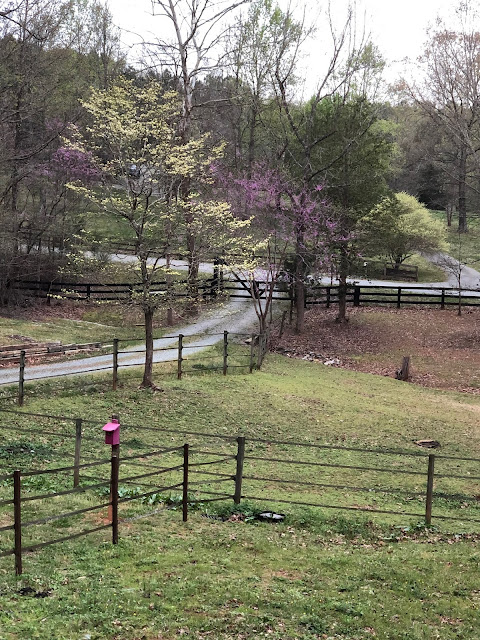I especially love seeing them in concert with the redbuds.
Two falls ago I planted two young dogwoods on either side of the driveway. One unfortunately dried out and died and the other one succumbed to something eating it down. These were small saplings and I hope to replace them with larger ones this fall. The existing dogwoods are mostly very old and we lost a couple in the past two years. There are many young ones volunteering along our property line on two sides, but we’re leaving those where they are.
These trees offer beautiful spring blooms, berries in late fall and into winter that are favorites among birds and opossums alike, and the greenery in later spring and summer creates a lush landscape on our farm.
The dogwood is our state tree here in North Carolina.
Here’s a bit more info:
Cornus florida
Common Name(s):
- Phonetic Spelling
- KOR-nus FLOR-ih-dah
- Description
- Flowering Dogwood is a deciduous tree that may grow 15 to 25 feet tall. The leaves are alternate, acutely veined, with a smooth to wavy margin. The bark is smooth when young. As the tree ages, the bark becomes very scaly to finely blocky. A very small and inconspicuous, tight cluster of green flowers surrounded by 4 very showy, large, white (occasionally pink) bracts mature in early spring. The small tree produces a cluster of red drupes that mature in the fall.










